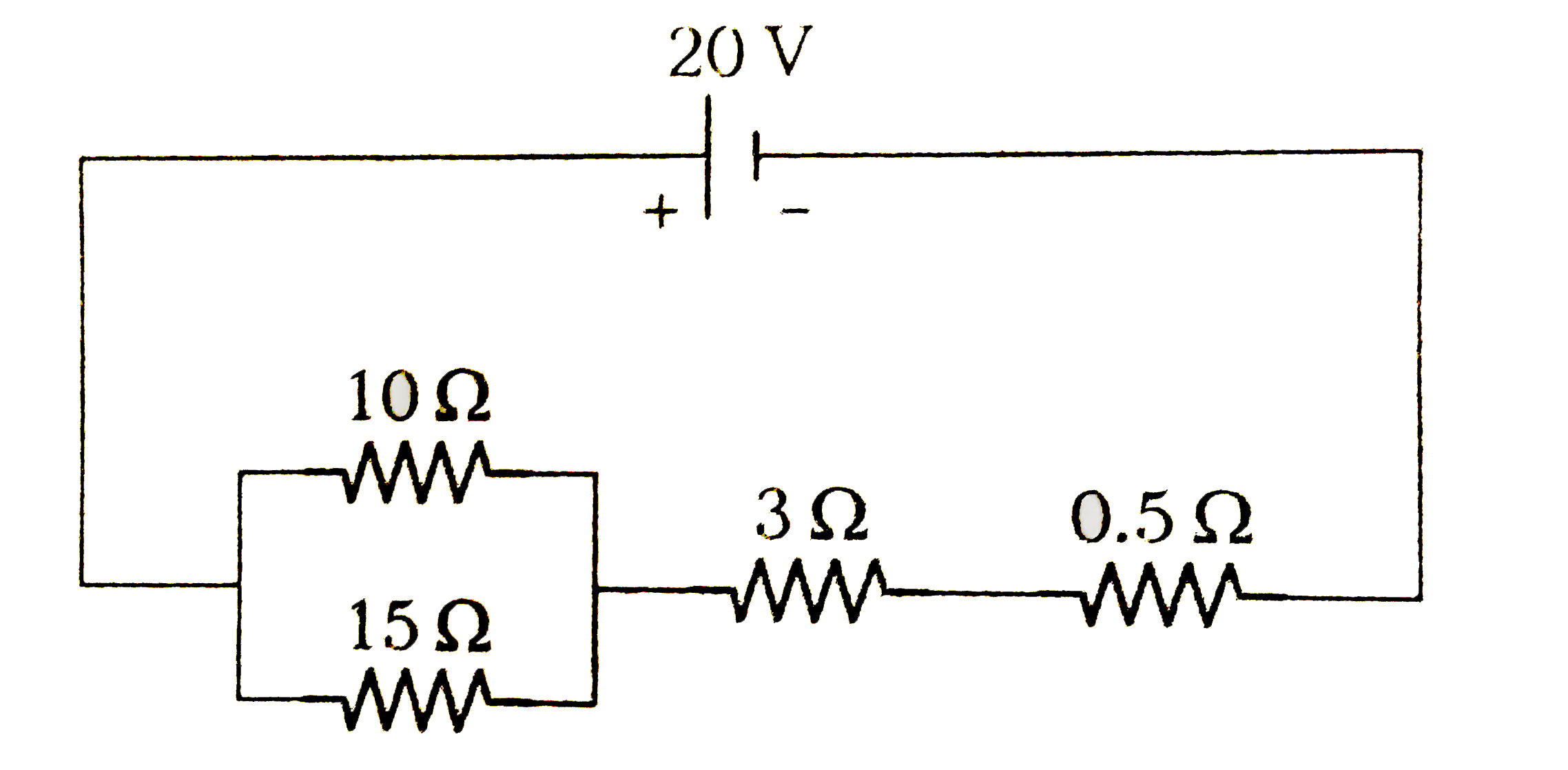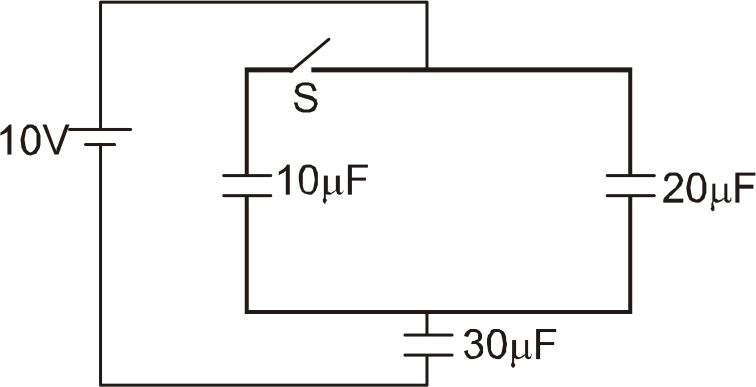10C of charge start from the negative terminal of a battery, flow through the battery and then leave the positive terminal through a wire, flow through a resistor and then return to the starting point on this circuit. In this complete process, the 10C....
Have no net change in potential energy
Receive heat energy from the resistor
Have a net loss of potential energy
Do positive work on the battery
The correct Answer is:A
To solve the question regarding the 10 Coulomb charge flowing through a circuit, we can follow these steps:
1. Understanding the Circuit:
- We have a circuit that includes a battery and a resistor. The charge starts from the negative terminal of the battery, flows through the circuit, and returns to the starting point.
2. Applying Kirchhoff’s Voltage Law (KVL):
- Kirchhoff's Voltage Law states that the algebraic sum of all potential differences in a closed circuit is zero. This means that when the charge completes a full cycle in the circuit, the total voltage gained and lost must balance out to zero.
3. Initial Potential Energy Calculation:
- The initial potential energy (U) of the charge can be calculated using the formula:
U=Q×V
where Q is the charge (10 C) and V is the potential at the starting point.
4. Completing the Circuit:
- As the charge moves through the circuit, it may gain or lose energy due to the resistor. However, when it returns to the starting point, according to KVL, the potential at this point will be the same as it was initially.
5. Final Potential Energy Calculation:
- After completing the cycle, the potential energy of the charge will still be:
U′=Q×V
Since the potential V remains the same, the potential energy does not change.
6. Conclusion:
- Since the charge returns to its original position with the same potential, there is no net change in potential energy. Thus, the correct answer to the question is that the 10 Coulomb charge has no net change in potential energy.
Answer:
The correct option is that the 10 Coulomb charge has no net change in potential energy.
---
- We have a circuit that includes a battery and a resistor. The charge starts from the negative terminal of the battery, flows through the circuit, and returns to the starting point.
- Kirchhoff's Voltage Law states that the algebraic sum of all potential differences in a closed circuit is zero. This means that when the charge completes a full cycle in the circuit, the total voltage gained and lost must balance out to zero.
- The initial potential energy (U) of the charge can be calculated using the formula:
U=Q×V
where Q is the charge (10 C) and V is the potential at the starting point.
- As the charge moves through the circuit, it may gain or lose energy due to the resistor. However, when it returns to the starting point, according to KVL, the potential at this point will be the same as it was initially.
- After completing the cycle, the potential energy of the charge will still be:
U′=Q×V
Since the potential V remains the same, the potential energy does not change.
- Since the charge returns to its original position with the same potential, there is no net change in potential energy. Thus, the correct answer to the question is that the 10 Coulomb charge has no net change in potential energy.
The correct option is that the 10 Coulomb charge has no net change in potential energy.
Topper's Solved these Questions
- CIRCUITSBOOK - RESNICK AND HALLIDAYCHAPTER - CIRCUITSEXERCISE - Practice Questions (More than One Correct Choice Type)
12 Videos
- CIRCUITSBOOK - RESNICK AND HALLIDAYCHAPTER - CIRCUITSEXERCISE - Practice Questions (Linked Comprehension)
11 Videos
- CIRCUITSBOOK - RESNICK AND HALLIDAYCHAPTER - CIRCUITSEXERCISE - Problems
45 Videos
- CENTER OF MASS BOOK - RESNICK AND HALLIDAYCHAPTER - CENTER OF MASS EXERCISE - Practice Questions (Integer )
4 Videos
- CIRCULAR MOTIONBOOK - RESNICK AND HALLIDAYCHAPTER - CIRCULAR MOTIONEXERCISE - CHECK POINTS
6 Videos
Similar Questions
Knowledge Check
The current flowing through 10Ω resistor in the circuit shown in the figure is
 A50 mAB20 mAC40 mAD40 mA
A50 mAB20 mAC40 mAD40 mAIn the circuit, the current flowing through 10Ω resistance is
 A12AB1.2AC0.8AD0.4A
A12AB1.2AC0.8AD0.4ACharge flow through the battery after closing the switch is (initially all capacitors are unxharged) :
 A20mCB30mCC120mCD150mC
A20mCB30mCC120mCD150mC
How much charge flows through a wire in 10 minutes if the current through it is 2.5 A?
View SolutionThe potential difference across terminals of a battry is 9.0V, when a current of 3.5A flows through it from its negative terminal to the positive terminal .When a current of 2A flows through in the opposite direction, the terminal potential difference is 12V. Find the internal resistance and emf of the battery
View SolutionCalculate the electric current through a wire if 10 coulombs of charge flow through a cross section of the wire in 2 seconds.
View SolutionConventional current flows from a ______ to ______ terminal of battery in a closed circuit.
View SolutionThe potential difference across te terminals of a battery is 10 V when there is a current of 3 A in the battery from the negative to the positive terminal. When the current is 2A in the reverse direction, the potential difference becomes 15 V. The internal resistance of the battery is
View Solution

